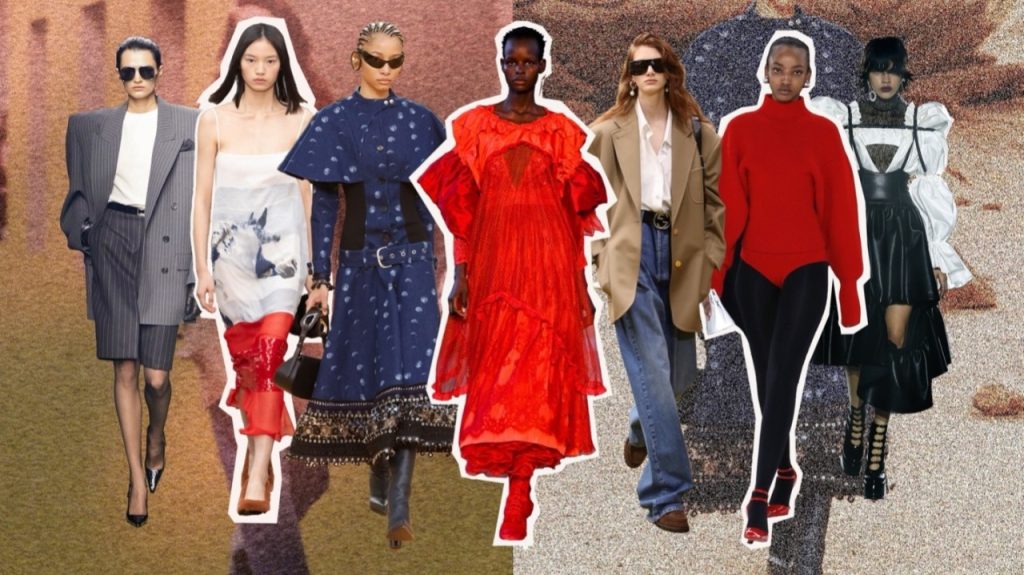Fashion is freedom — it’s not just clothes, it’s our way of expressing ourselves, our identities, our stories and our cultures. Fashion has always been something through which people could break boundaries, question norms, and promote individuality. Whether it be the clothes we wear or the accessories we select, fashion represents the perfect way to say who we are without having to speak a word. In today’s crazy, loud, backwards world, fashion still remains a dynamic force of creativity, empowerment and liberation.
In this post, we will look thoroughly at why fashion is freedom and how through fashion you free people on all corners of the world as you also try to talk fashion and society, culture, and personal expression.
Fashion is Freedom: A Look Back in History
It attaches itself to freedom; it does so from the beginning of fashion. Styles have stood for liberation, rebellion and even revolution at different points in time.
- The Roaring Twenties: Flappers in short dresses with cropped hair reject Victorian restrictions.
- 1960s & 70s Hippie Movement: Hippies utilized bright textiles for clothing, tie-dyes, loose fitting clothes inspired by oriental cultures, and psychedelic posters made for their very personal style of the era.
- Punk-style 1980s Clothing: With its leathers and ripped denim, and accessories, punk manifested an attitude of disobedience for authoritative stands.
- Modern Times: Nowadays, people are using fashion to fight stereotypes, the advocate for the inclusion and celebrate the fluidity of gender.
Every generation shows that fashion is freedom — it’s a way for us to break barriers and make room for our individual.
Fashion as Personal Expression and Freedom of Expression
Personal expression is the most positive part of fashion. When you hear people say that fashion is freedom, it’s a statement that evokes the following:
- Identity Defined: Clothing is a physical manifestation of who we are, how we feel, and what we believe.
- Gender Bending: Participants wear clothes that are not stereotypically associated with their sex.
- Cultural Pride: When people wear traditional clothing they take pride in their culture.
- Mood & Creativity: Loud, colourful clothing could represent joy, minimalist fashion may represent elegance, or tranquility.
One of the best things about fashion is that it is an outlet through which every one of us creates aesthetic statements without uttering a word.
Fashion is Freedom: Empowering Women
“Fashions fashion is freedom” is not just some wise aphorism, and yet nowhere is it truer than in the context of women’s freedom. For centuries, the clothing of women was employed to restrain movement and reinforce social contraints.
- Corsets and Restraints: Once upon a time, women were confined to the forced tight fit of corsets and layered skirts.
- Pants Revolution: The act of women putting on pants in the 20th century was considered a symbol of independence.
- Modern Feminism: Women today choose fashion for comfort, power or identity — not the dictates of society.
- Hijab and “Choice”: For many women, wearing a hijab is a sign of empowerment and freedom of religion, while for others taking it off may mean freedom.
Fashion empowers women to decide what they want to be perceived as and how they want to move in the world.
Fashion Equates to Freedom in Gender Identity
Fashion is, of course, closely related to gender freedom. Clothing has long been used to differentiate genders, but today’s trends suggest some barriers are coming down.
- Unisex Fashion: Makers now produce collections that are not exclusively male or female.
- Androgynous Styles: Celebrities like Harry Styles and Janelle Monáe wear androgynous fashions to playfully bend gender.
- Trans & Non-Binary Communities: Fashion is a means to explore who you are, and to be seen as who you really are.
And this is why fashion is freedom: It allows people to crawl out of prescribed boxes and present an authentic self.
Fashion and Cultural Identity: The Freedom of Heritage
Because if there’s cultural freedom anywhere, fashion is it, allowing us to express who we are and where we come from. Culture-based attire represents more than style; it’s heritage, pride, and storytelling.
- African Prints & Textiles: Heritage and community in bold patterns.
- Indian Sarees & Kurta Pajamas: For the Indian festivals you’ve got to honor your heritage while dressing for India.
- Native American Regalia: Is there to express traditions, tradition and ancestors.
- Contemporary Hybrids: So many young ones blend cultural trends with modern trends to come up with stunning, bold combinations.
Fashion is how culture is sustained, respected, flaunted.
Fashion is Freedom in Protest and Activism
Fashion is more than just personal — it is political. Fashion has long been a symbol of freedom and protest for many movements.
- Black Panthers in the 1960s: Black leather jackets and berets become symbols of power and resistance.
- LGBTQ+ Pride Fashion: Clothes and drag are declarations of freedom.
- Eco-Friendly Fashion: Sustainable fashion whether its second hand or not – it’s a protest against waste and fast fashion.
- Feminist Fashion: Political statements can be found on T-shirts bearing messages like “Nevertheless, She Persisted.”
Fashion is freedom because you have the visible platform to fight injustice and demand change.
Fashion Freedom for the Office
How you present yourself in the office has changed a lot in the past few years. Dress codes that were formerly strict are loosening, replaced by pluralism and individuality.
- Corporate Relaxation: Firms like Google and Facebook push the casual dress code.
- The New Dress Code: New professionalism and what you can and cannot wear at work.
- Power Dressing: Suits and blazers are traditionally associated with confidence and businesslike formality.
- Remote Work: The boundaries have been blurred by work-from-home culture, and wearing comfort-forward fashion has gone mainstream.
Business fashion is freedom, even in a suit — freedom for the working woman to communicate comfort and authenticity.

The Dark Side of Fashion: When Style Stifles Freedom
And so if fashion is freedom, fashion is also darkness.
- The Exploitation of Fast Fashion: Sweatshop workers have little freedom and work in terribly unsafe conditions.
- Body Shape Pressure: Imposed standards of beauty from the media can make you feel like a prisoner instead of beautiful.
- Cultural Appropriation: Fashion occasionally abuses cultural components without regard, and strips them of their authenticity.
As for real fashion freedom? It’s not just about self-expression; it’s about ethical practices and inclusivity.
Fashion is Freedom: How the Empowering Future of Fashion is Breaking Down Racial Barriers
Fashion in the future will probably be all about inclusivity, sustainability, and self-expression.
- Sustainable Options: Zero-waste textiles and slow fashion will be the new normal.
- Fashion Inclusivity: Brands will continue to adopt plus-size, adaptive and gender-neutral clothing lines.
- Technology and Fashion: Smart fabrics, AR dressing rooms and 3D-printed clothes will give a new meaning to freedom.
- Personal Branding: As virtual spaces expand, fashion will remain one of the most powerful tools of online identity.
Fashion is freedom and it is a growing freedom – and it will not stop people defining who they are.
FAQs on Fashion is Freedom
Why is fashion considered freedom?
Freedom of fashion: Fashion is freedom because of the available freedom for people to express themselves, question norms and identities without being restricted.
What has freedom looked like in fashion throughout history?
From women refusing to wear corsets to the punk era, fashion has been deployed as a form of protest, empowerment and liberation.
Can fashion empower marginalized communities?
Yes, fashion is a means for marginalized groups to show pride in themselves, to become visible, to challenge stereotypes.
Is fashion always liberating?
Not always. Fast-fashion exploitation, body image pressure, cultural appropriation are just some of the obstacles to that freedom.
What will future fashion look like?
The fashion of the future will be sustainable, inclusive, individualistic and tech-driven.
Conclusion
Fashion is freedom — it’s a language of expression, identity and empowerment. From personal style to historical tradition and political engagement, fashion is a way for people to demonstrate who they are and what they stand for. Although there are still challenges like exploitation and body image, the trajectory for fashion has generally been one of inclusivity, diversity, and creativity.
After all, fashion is about more than clothes. It’s the freedom to be genuine, bold, unapologetically yourself.





